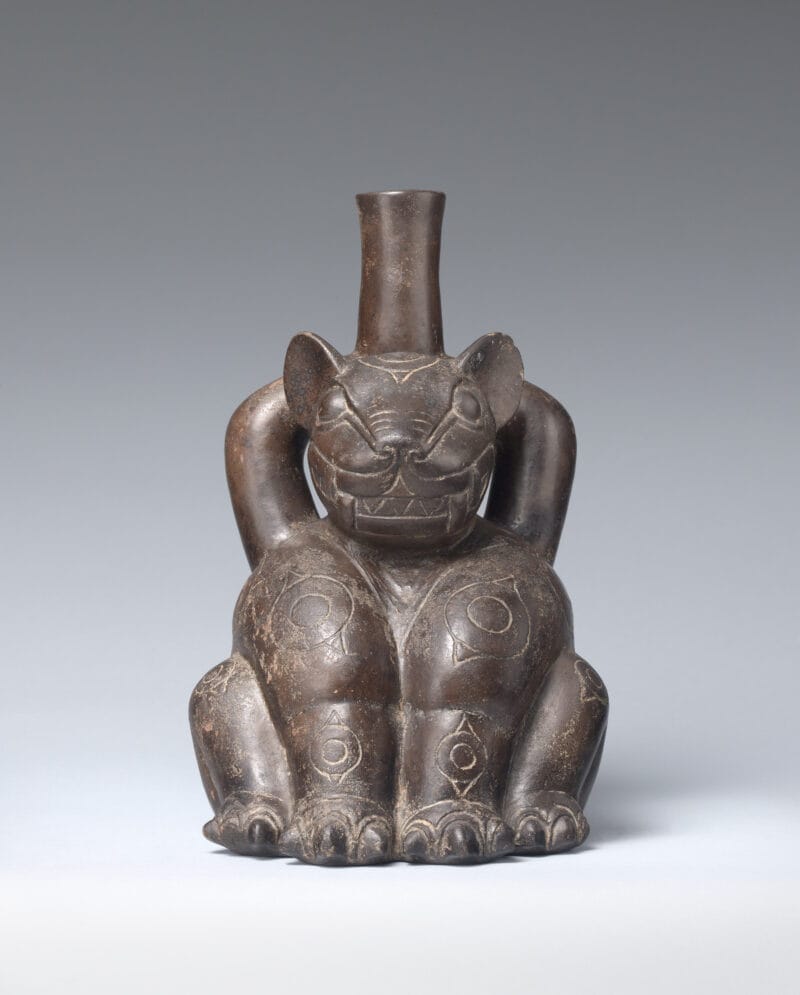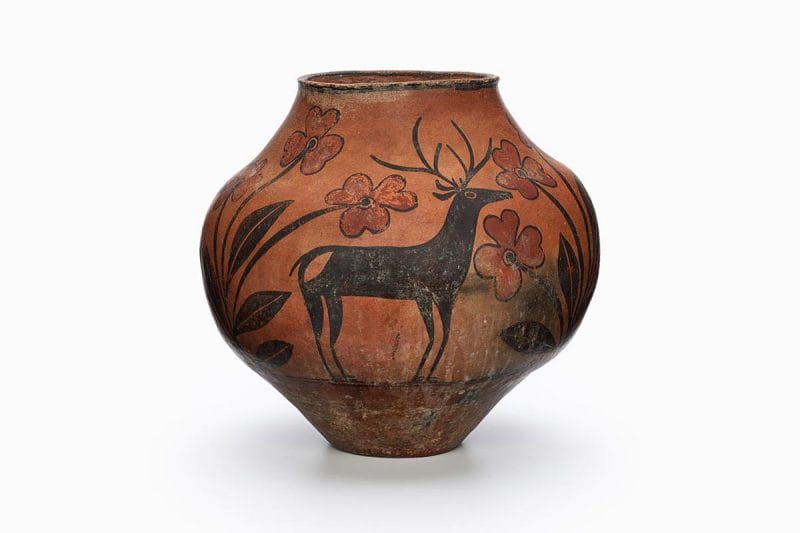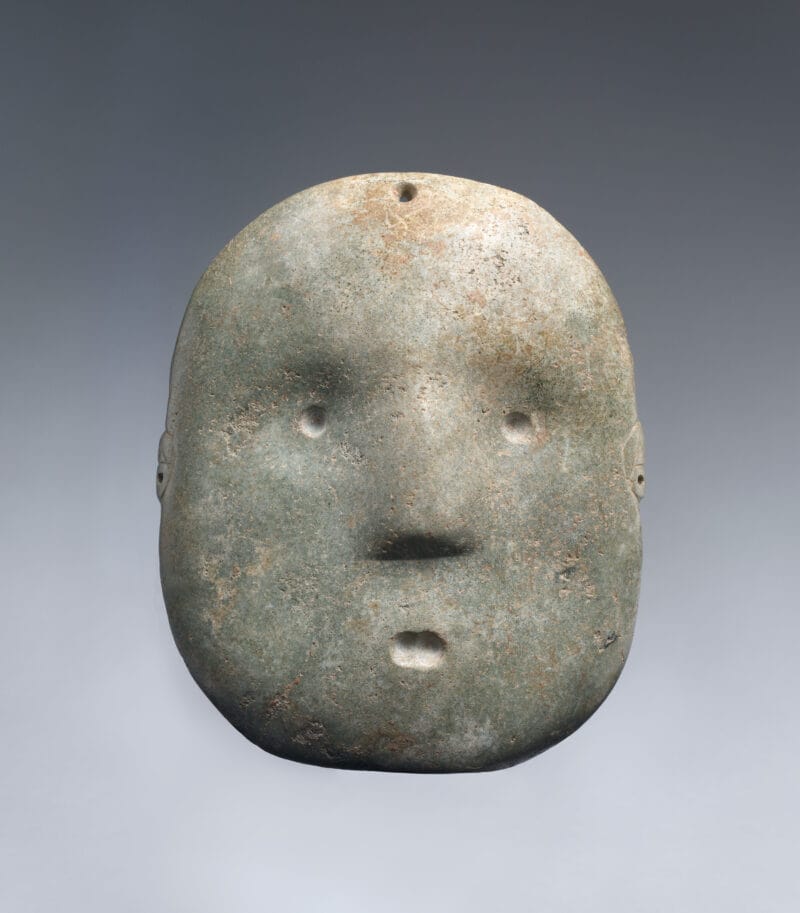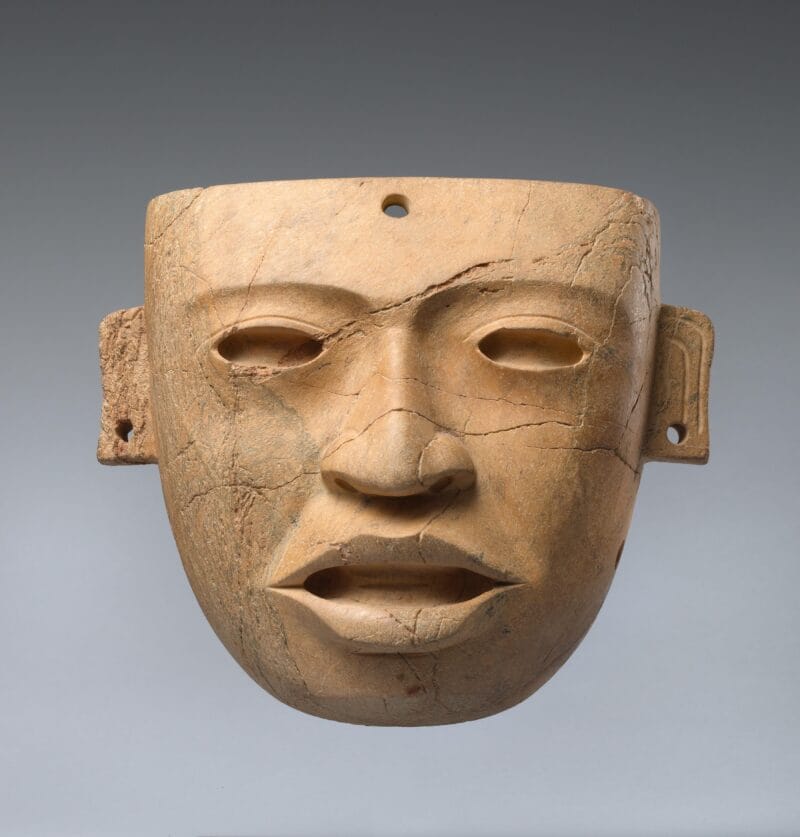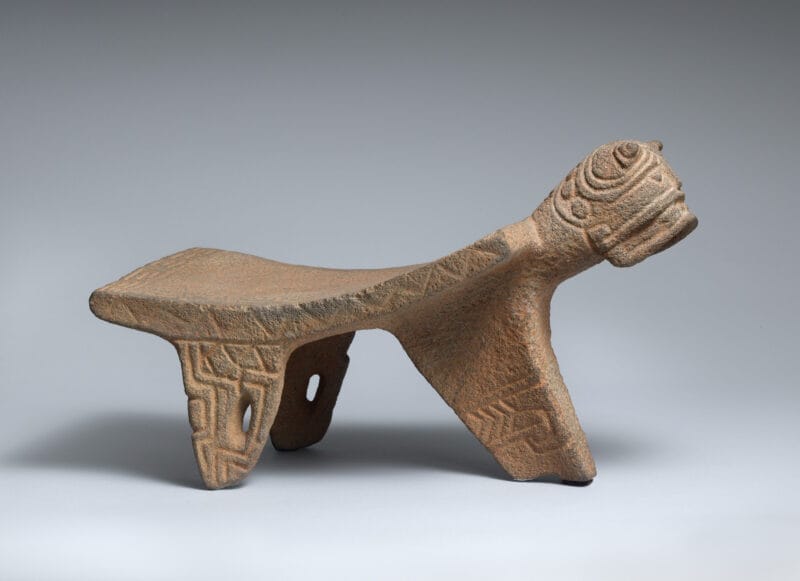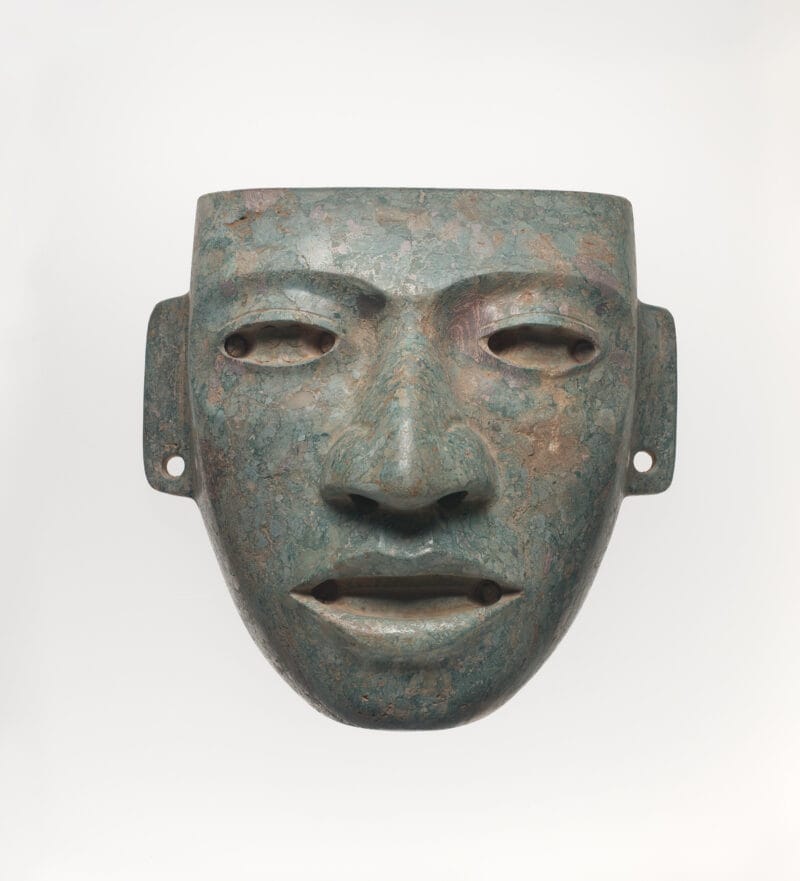
About the Object
This Teotihuacan mask displays close stylistic and iconographic links to the earlier Mesoamerican Olmec civilization. It probably captures a moment of transformation of a human or deity into a jaguar. The eyes are not original to the piece but are believed to date from the same period and would have been inlaid in a similar work. Such transformations were usually associated with shamanistic rituals involving the ingestion of psychotropic substances. The ritual consumption of these plants was understood to symbolically link humanity to the supernatural world. This practice became quite influential in the maintenance of socio-political structures at Teotihuacan, then spread among other Mesoamerican cultures such as the Maya, Olmec, and Mexica, commonly known as the Aztecs.
Additional Information
In Mesoamerica, tropical forest-dwelling jaguars were associated with rainfall and fertility, leading many scholars to believe that such figures represent an early form of the pan-Mesoamerican rain god Tlaloc. This likely accounts for the transformation of human to jaguar features. Scholars believe that this and similar figures with upturned upper lips convey fangs and simultaneously represent caves and sacred springs. These spaces, which archaeological excavations have revealed beneath some of the major pyramids at Teotihuacan, were associated with the creation of the universe in Teotihuacan mythology and may demonstrate the city’s cosmological and spiritual significance throughout Mesoamerica.
Evelyn Rhoads Collection, 1950s-1990s;
On loan to Princeton University Art Museum, 1970s;
[Throckmorton Fine Art, New York, NY];
The Jan T. and Marica Vilcek Collection, 1999-2010;
Gift to The Vilcek Foundation, 2010;
